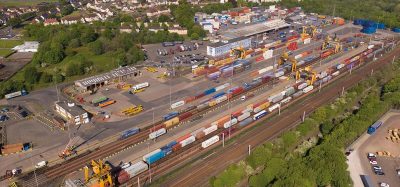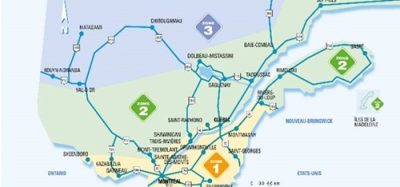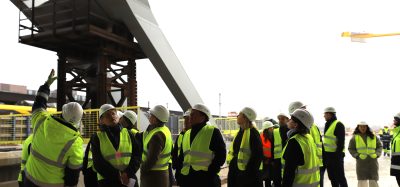The rail freight situation in Serbia
Posted: 6 February 2007 | | No comments yet
After a long period of time characterised by the lack of major investments in railway infrastructure, particularly in rolling stock, Serbian Railways has made serious steps towards the creation of a solid basis for working conditions. This was an important precondition for the fulfillment of permanently growing requests for freight services. These activities have specifically been emphasised over the last two years.
After a long period of time characterised by the lack of major investments in railway infrastructure, particularly in rolling stock, Serbian Railways has made serious steps towards the creation of a solid basis for working conditions. This was an important precondition for the fulfillment of permanently growing requests for freight services. These activities have specifically been emphasised over the last two years.
After a long period of time characterised by the lack of major investments in railway infrastructure, particularly in rolling stock, Serbian Railways has made serious steps towards the creation of a solid basis for working conditions. This was an important precondition for the fulfillment of permanently growing requests for freight services. These activities have specifically been emphasised over the last two years.
The ‘New Railway Law’, adopted in 2005, determined that to achieve accelerated progress in the future, one contemporary position of the railways in macro-economic surroundings and created conditions for their structural and organisation transformation should be adopted.
The Public Enterprise of Serbian Railways (ZS) has traded officially under this name since May 2005 when the new organisation was put into effect and the first step was made in accordance with the European Union regulations on the separation of infrastructure and transport. Currently, Serbian Railways have two divisions (still under the same roof) for transport and for infrastructure. Within the Transport Division there is a Freight Transport Department, working with more than 1,500 employees.
During the 1990s, the situation in Serbia left an extremely negative inheritance with bad conditions for consolidation and the development of the railway system. The best example is the state of the fleet of freight rolling stock. The former railway transport enterprise ‘Beograd’ had 16,000 freight cars of different types at its disposal, while today Serbian Railways handles only 3,800 freight wagons. Concerning the requests of domestic economy and requirements for freight transport of international companies, it is clear that Serbian Railways needs at least the same number of wagons. Having in mind the current transport structure, the greatest need is to acquire the wagon types: Eas, Habis, Tads and Rils. Therefore, Serbian Railways are trying to alleviate and overcome this problem. Tender for the leasing of 400 freight cars has already been announced, and with the loan approved by the European Bank for Reconstruction and Development, in 2007, Serbian Railways will procure 1,100 new freight wagons, which will significantly improve the situation and help satisfy the growing request for the transport.
Also, over the last year, we significantly renewed and increased the number of available traction units, mostly through the repair of the existing ones, and the provision of second-hand locomotives. During December 2007, another 24 reconstructed locomotives should be delivered to us. What is particularly interesting is that Serbian Railways decided to buy 10 new multi-system locomotives, which clearly reflects their determination to enter actively and compete in the international freight transport market.
Along with the provision of freight wagons and locomotives, Serbian Railways are paying great attention to the improvement of transport service quality, in order to secure better competitiveness. Combined transport efforts keep freight traffic growing, mostly through a permanent growth of the number of container trains, transported in transit across Serbia. However, Serbian Railways’ offer is being extended to new products. After test runs during the last quarter of 2006, a new Timetable defined the regular transport of so-called Ro-La Trains on the route between Austria and Turkey – even in the future.
In order to improve the quality of railway services and to provide a better position for Serbian Railways on the transport market, it is necessary that more work on infrastructure renewal is needed, considering the fact that at certain railway lines condition of infrastructure has become the limiting factor of further development. It will be a complex task, requiring the provision of appropriate financial means, which is still feasible. As an example of infrastructure investments, I would like to mention last year’s works on the widening and strengthening of bridges on the route from Nis to the Bulgarian border and Dimitrovgrad Station, the one that has been transformed into a joint station of two railway companies ZS and BDZ.
Serbian Railways are presently concentrating on a project named ‘Railway Renewal II’, financed from loans approved by the European Bank for Reconstruction and Development totaling €60 million and intended for the aforementioned provision of 1,100 new freight wagons. Other credit obtained from the European Investment Bank of €80 million is earmarked for the reconstruction, modernisation and construction of 90 kilometers of a line that is part of Corridor X passing through Serbia, specifically on the routes of Sid-Belgrade (15km), Belgrade-Nis (14km) and Nis-Dimitrovgrad (61km). Modernisation of railway lines on Corridor X should increase the volume of freight transport, particularly in transit transport.
It is important to mention that for the entire modernisation of the main railway line on Corridor X which passes through Serbia and is being carried out in accordance with European standards and includes the electrification of railway line Nis-Dimitrovgrad and construction of the second track at certain single-track sections, it is necessary to procure an investment sum of more than €1 billion. This is obviously a very high amount, but Serbian Railways made some decisive and concrete measures aiming to create vital pre-conditions for future successful business operations and to strengthen the position of Serbian Railways as a transport enterprise in internal and international freight transport.
During the first 11 months of 2006, Serbian Railways transported 12.5 million tones of goods. Therefore, it is more than probable that 14 million tones was transported by the end of the year, which would represent an increase of 12%, compared to the transport volume in 2005.
The income gained from freight services for Serbian Railways from January to November 2006 reached 8.2 billion Dinars. Therefore, it will probably reach 9.1 billion Dinars overall, in other words 114 million EUR, which is being expected till the end of the year. This result represents the increase of freight transport incomes for 29 %, which clearly indicates that increasing tendency in freight transport volume and incomes is continuing from year to year, under the average rate of 20 %.
To illustrate the evolution of freight transport volume with some examples, I will give a brief comparison of statistics regarding the quantity of goods carried in certain key moments during the last 15 years. In 1992, when the embargo had been imposed on Serbia and at the time when international freight traffic had been halted, the railways transported 16.5 million tones of goods – an amount still difficult to achieve nowadays. A negative influence of international isolation brought down our freight transport on the needs of domestic economy also stagnating. As a result, over the following three years, the level of transport was moving around six million tones (the lowest level was recorded in 1994, amounting to no more than 5.87 million tones). Until 2003, the level of freight traffic did not surmount 10 million tones. Ever since then, that level has been increasing every year, at an average rate of approximately 10%.
Observing the situation from a transport point of view, and simultaneously having in mind the aforementioned lack of freight cars for the fulfillment of domestic requests, it is not surprising that international service contributes 85% of the total freight traffic on Serbian Railways.
Nevertheless, the biggest interest in freight transport is in transit transport on Serbian railways across Corridor X, and generally on the route between West and Middle European countries, plus Greece and Turkey on the other side and above all in the direction north-south. But, what makes us pleased is a significant increase of railway freight services in the section of export and import, as well as the revival of new railway lines and intensification of freight transport in foreign trade of Bosnia and Herzegovina and Romania and Bulgaria on the other side.
This year, we successfully commenced a large project entitled ‘Advance Classification Centre at Belgrade Marshalling Yard’, where complete trains owned by our big clients are going through the process of re-forming. These general-purpose goods trains, arriving from marshalling yards Filah, Ljubljana Zalog, Sopron and Sturovo, after the classification in Belgrade, are being forwarded to destinations in Bulgaria, Turkey, Macedonia and Greece.
As a final point I would like to emphasize that the aforementioned positive results in freight services are being simultaneously followed by an increase in efficiency and occupancy in the work of all employees in this section of Serbian Railways. Thanks to the Stimulation Program with the aim to achieve an optimal number of employees at the enterprise, over the last two years a certain number of our workers left the Freight Transport Department. As a result, our Department had no negative consequences – on the contrary – the new organisation improved efficiency and profitability. It brings us to the conclusion that, in spite of various measures taken in order to improve the quality of Serbian Railways, human factor was one stable element and a basis of the success achieved in management and business.
About the author
Vasilije Krstic graduated from the Faculty of Economics (University of Belgrade) – Department of Foreign Trade. His previous position was at the civil-engineering company Planum, as an export manager for foreign countries. In 1987, he joined the railways – then the ‘Union of Yugoslavian Railways’, and worked in the department for Freight Transport in Transit. In 1993, he was appointed Chief of the Passenger Traffic Department, then later the Director of the Commercial Department in 2002. During 2004, he went over to the former Railway Transport Enterprise ‘Beograd’, as an Assistant Director of the Commercial Department. He is currently the Director of the Freight Transport Department at Serbian Railways.






